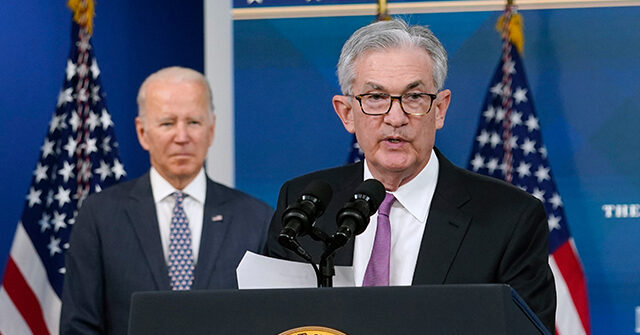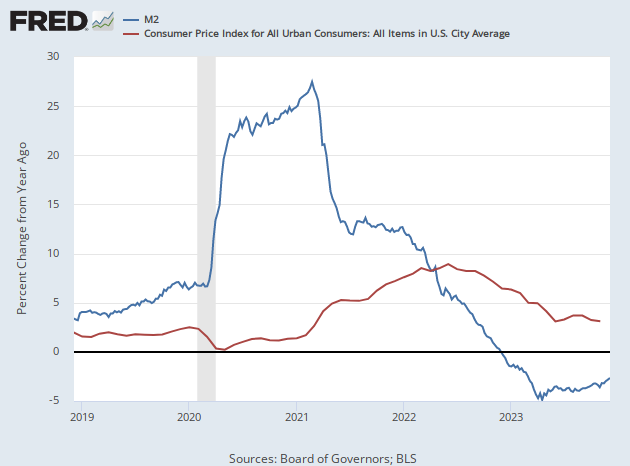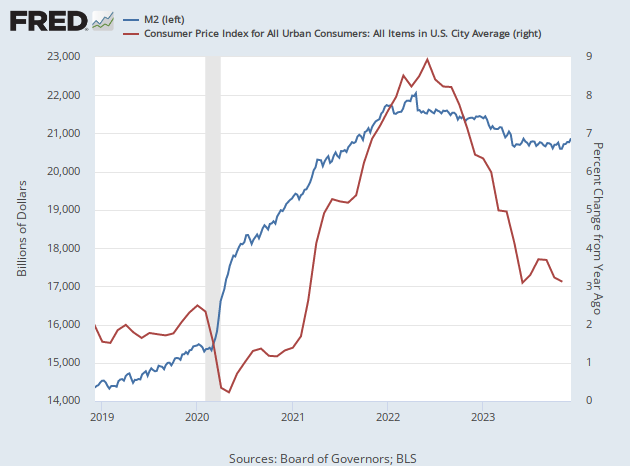Top News
Breitbart Business Digest: An Election Year Fed Cut Could Court Political Catastrophe

M2 Also Rises
The money supply is rising again.
The dramatic rise in the money supply, as measured by M2, was one of the warning bells that alerted those paying attention to the rise of inflation. The decline of M2 was also an important signal that inflation would moderate this year.
Now M2 is rising. It appeared to have ebbed in late October, coinciding with the peak of yields on 10-year Treasuries. As the chart below indicates, M2 subsequently began a sharp and steady increase.
The latest weekly figures were released on December 26 and run through December 4, prior to the Federal Reserve’s dovish pivot. They show the money supply rising to the highest point since April, when M2 spiked following the Silicon Valley Bank failure and the Fed’s moves to support the banking system.
On a year-over-year basis, the money supply is still in contraction. But that contraction is now just 2.6 percent compared with the 4.2 percent contraction of last spring. This suggests that the money supply is no longer as restrictive on real economic activity or inflation as it was during the months when inflation was falling.
If we chart the year-over-year change in inflation and the money supply together, we can see that the rise of inflation trailed the rise of the money supply by about 12 months, which matches the 12 to 24 month lag that Professors John Greenwood and Steve Hanke said is typical way back in July of 2021. Similarly, the annual increase in M2 peaked in February of 2021, and inflation peaked 16 months later.

The first leg down in M2 ended in late June of 2022 and then moved sideways for the remainder of the year. Inflation followed that pattern with around a one year lag, falling on a year-over-year basis until June of this year and then mostly moving sideways.
Based on this pattern, it should be expected that inflation will continue to decline, but that decline should slow down. If the rise of M2 continues, it should be expected to reverse, and inflation should climb once again.
The chart police will absolutely hate the next chart because it combines the year-over-year change in the Consumer Price Index (CPI) with the absolute level of the money supply. But sometimes you have to break the laws of charting to see the economic reality. This also shows inflation rising with a lag to the quantity of money and then falling as the money supply contracted.

If you squint your eyes at the right side of the chart, you can see that the money supply has ticked up since the last read of the Consumer Price Index, which showed inflation falling. We do not expect this discrepancy to last. If the money supply continues to expand, inflation is likely to eventually follow.
The Fed Risks the Appearance of Politicalization
This has important implications for the Fed. It suggests that a rate cut early this year could be very risky because the Fed could find itself cutting just before a re-ignition of inflation. Even more explosively, the Fed could find itself in the unenviable position of cutting during an election year and then having to raise rates following the election.
In the increasingly unlikely event that President Joe Biden wins re-election, this would be bad enough. Donald Trump has already predicted—in an exclusive interview with Breitbart News—that the Fed will cut rates to keep Biden in power. An election year cut followed by a rise in inflation and then a new hiking cycle would cement the view that the Fed acted on political motives.
Now imagine if Donald Trump wins in November, and the Fed finds itself needing to hike to tamp down inflation. The political firestorm that would result would threaten the Fed’s independence and perhaps even its continued existence. The U.S. has seen past incarnations of its central banks toppled under the belief that they had become tools of entrenched elites. A Fed cut during the election cycle followed by hikes during a Trump administration could see that pattern repeated.
That seems a lot to risk for the sake of cutting rates in an economy at full employment and growing faster than its longterm trend.
Read the full article here


















